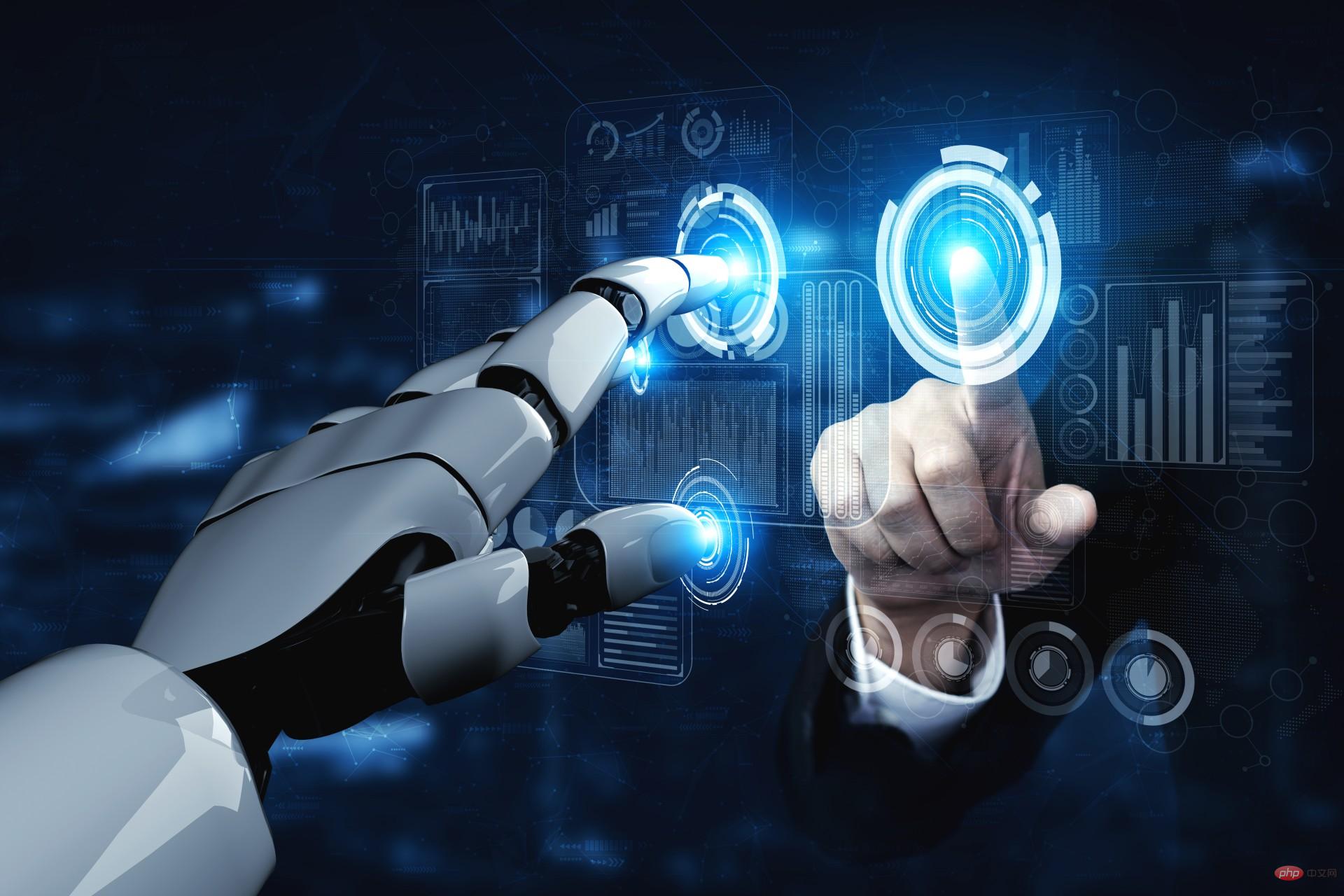Recently, PwC analysts shared their views with foreign technology media VentureBeat on how tools such as generative artificial intelligence and ChatGPT will affect the threat landscape and what use cases will emerge for defenders.
They believe that while AI’s ability to generate malicious code and phishing emails creates new challenges for enterprises, it also opens the door to a range of defensive use cases, such as threat detection. , remediation guidance, and securing Kubernetes and cloud environments, and more.
Overall, analysts are optimistic that defensive use cases will rise in the long term to combat malicious uses of AI.
Here are 11 predictions about how generative artificial intelligence will impact cybersecurity in the future.

1. Malicious Use of Artificial Intelligence
When it comes to what we can We are at an inflection point when it comes to leveraging artificial intelligence, a paradigm shift that affects everyone and everything. When AI is in the hands of citizens and consumers, great things can happen.
At the same time, it can be used by malicious threat actors for nefarious purposes, such as malware and sophisticated phishing emails.
Given the many unknowns about the future capabilities and potential of artificial intelligence, it is critical that organizations develop strong procedures to build resilience against malicious networks.
There also needs to be regulation based on social values, stipulating that the use of this technology must be ethical. At the same time, we need to be “smart” users of this tool and consider what safeguards are needed so that AI delivers maximum value while minimizing risk.
2. Need to protect the training and output of artificial intelligence
Now, generative artificial intelligence has the ability to The ability to help enterprises transform is important for leaders to partner with companies that have a deep understanding of how to navigate growing security and privacy considerations.
There are two reasons. First, companies must protect the training of AI because the unique knowledge they gain from fine-tuning models will be critical to how they run their businesses, deliver better products and services, and engage with employees, customers, and ecosystems.
Second, companies must also protect the cues and reactions they get from generative AI solutions because they reflect what the company’s customers and employees are doing with the technology.
3. Develop a generative AI usage policy
When you consider using your own content, files and When assets further train (fine-tune) a generative AI model so that it can operate on your business's unique capabilities within your (industry/professional) context, many interesting business use cases emerge. In this way, companies can use their unique intellectual property and knowledge to expand the way generative AI works.
This is where security and privacy become important. For a business, the way you enable generative AI to produce content should be your business’s privacy. Fortunately, most generative AI platforms have this in mind from the beginning, and are designed to prompt, output, and fine-tune content securely and privately.
However, now all users understand this. Therefore, any enterprise must establish policies for the use of generative AI to prevent confidential and private data from entering public systems and establish a safe and secure environment for generative AI within the enterprise.
4. Modern security auditing
Generative artificial intelligence is likely to lead to innovation in audit work. Sophisticated generative AI has the ability to create responses that take into account certain situations while being written in simple, understandable language.
What this technology provides is a single point for information and guidance, while also enabling document automation and analyzing data to respond to specific queries - all with great efficiency. This is a win-win result.
It’s easy to see that this capability can provide a better experience for our employees, which in turn provides a better experience for our customers.
5. Pay more attention to data hygiene and evaluation bias
Any data input into the artificial intelligence system may be risk of theft or misuse. First, determining the appropriate data to enter into the system will help reduce the risk of losing confidential and private information.
Additionally, it is important to do proper data collection to formulate detailed and targeted tips and feed them into the system so that you can get a more valuable output.
Once you have your output, you need to check if there are any inherent biases within the system. During this process, bring in a diverse team of professionals to help assess any bias.
Unlike coded or scripted solutions, generative AI is based on trained models, so the responses they give are not 100% predictable. For generative AI to give the most trustworthy output, it requires collaboration between the technology behind it and the people leveraging it.
6. Keep up with expanding risks and master the basics
Now that generative AI is being widely used Adopting and implementing strong security measures is necessary to protect against threat actors. The capabilities of this technology make it possible for cybercriminals to create deepfake images and more easily execute malware and ransomware strikes, and companies need to be prepared for these challenges.
The most effective cyber measures continue to receive the least attention: By maintaining basic cyber hygiene and compressing bulky legacy systems, companies can reduce cybercriminals.
Consolidating operating environments can reduce costs, allowing companies to maximize efficiency and focus on improving their cybersecurity measures.
7. Create new jobs and responsibilities
Overall, I recommend that companies consider embracing generative AI, rather than building firewalls and resistance - but with appropriate safeguards and risk mitigation in place. Generative AI has some very interesting potential in terms of how work gets done; it can actually help free up human time for analysis and creation.
The emergence of generative AI has the potential to lead to new jobs and responsibilities related to the technology itself - and create a responsibility to ensure that AI is used ethically and responsibly.
It will also require employees who use the information to develop a new skill - the ability to evaluate and identify whether the content created is accurate.
Just like calculators are used for simple math-related tasks, there are still many human skills that need to be applied in the daily use of generative AI, such as critical thinking and Customization with purpose—to unleash the full power of generative AI.
So while on the surface it may seem like a threat in terms of the ability to automate human tasks, it can also unleash creativity and help people excel at work.
8. Leveraging Artificial Intelligence to Optimize Network Investments
Even in times of economic uncertainty, companies There are no active efforts to reduce cybersecurity spending in 2023; however, CISOs must consider whether their investment decisions make more economical sense.
They are facing pressure to do more with less, leading them to invest in technology that replaces overly manual risk prevention and mitigation processes with automated alternatives.
Although generative AI is not perfect, it is very fast, efficient and coherent, and its skills are improving rapidly. By implementing the right risk technology – such as machine learning mechanisms designed for greater risk coverage and detection – organizations can save money, time and people and be better able to navigate and withstand any future uncertainty.
#9. Enhance Threat Intelligence
#While companies unleashing generative AI capabilities are focused on protection to prevent The creation and spread of malware, misinformation, or disinformation, but we need to assume that generative AI will be used by bad actors for these purposes and act in advance.
In 2023, we expect to see further enhancements in threat intelligence and other defense capabilities to leverage generative AI to do good for society. Generative AI will allow for fundamental advances in efficiency and real-time trust decision-making. For example, access to systems and information can be formed into real-time conclusions with a much higher level of confidence than currently deployed access and identity models.
What is certain is that generative AI will have a profound impact on every industry and the way companies within it operate; PwC believes these advancements will continue Human-led and technology-driven, 2023 will see the most rapid advances, setting the direction for the coming decades.
10. Threat Prevention and Managing Compliance Risks
As the threat landscape continues to evolve, health departments- - an industry awash in personal information - continues to find itself in the crosshairs of threat actors.
Health industry executives are increasing their cyber budgets and investing in automated technologies that can not only help prevent cyber strikes but also manage compliance risks, better Protect patient and staff data, reduce healthcare costs, eliminate inefficient processes, and more.
As generative artificial intelligence continues to advance, so do the risks and opportunities associated with securing healthcare systems, underscoring the ways in which the healthcare industry is building its capabilities as it embraces this new technology. The importance of cyber defense and resilience.
11. Implement a digital trust strategy
The speed of innovation in technologies like generative AI, coupled with the continued The “patchwork” of regulation and the erosion of trust in institutions require a more strategic approach.
By pursuing a digital trust strategy, enterprises can better coordinate traditionally siled functions such as cybersecurity, privacy and data governance, allowing them to anticipate risk while also freeing up the enterprise value.
At its core, the Digital Trust Framework identifies solutions that go beyond compliance – instead prioritizing trust and value exchange between organizations and customers.
The above is the detailed content of PwC: 11 security trends in ChatGPT and generative AI. For more information, please follow other related articles on the PHP Chinese website!
 2023年机器学习的十大概念和技术Apr 04, 2023 pm 12:30 PM
2023年机器学习的十大概念和技术Apr 04, 2023 pm 12:30 PM机器学习是一个不断发展的学科,一直在创造新的想法和技术。本文罗列了2023年机器学习的十大概念和技术。 本文罗列了2023年机器学习的十大概念和技术。2023年机器学习的十大概念和技术是一个教计算机从数据中学习的过程,无需明确的编程。机器学习是一个不断发展的学科,一直在创造新的想法和技术。为了保持领先,数据科学家应该关注其中一些网站,以跟上最新的发展。这将有助于了解机器学习中的技术如何在实践中使用,并为自己的业务或工作领域中的可能应用提供想法。2023年机器学习的十大概念和技术:1. 深度神经网
 超参数优化比较之网格搜索、随机搜索和贝叶斯优化Apr 04, 2023 pm 12:05 PM
超参数优化比较之网格搜索、随机搜索和贝叶斯优化Apr 04, 2023 pm 12:05 PM本文将详细介绍用来提高机器学习效果的最常见的超参数优化方法。 译者 | 朱先忠审校 | 孙淑娟简介通常,在尝试改进机器学习模型时,人们首先想到的解决方案是添加更多的训练数据。额外的数据通常是有帮助(在某些情况下除外)的,但生成高质量的数据可能非常昂贵。通过使用现有数据获得最佳模型性能,超参数优化可以节省我们的时间和资源。顾名思义,超参数优化是为机器学习模型确定最佳超参数组合以满足优化函数(即,给定研究中的数据集,最大化模型的性能)的过程。换句话说,每个模型都会提供多个有关选项的调整“按钮
 人工智能自动获取知识和技能,实现自我完善的过程是什么Aug 24, 2022 am 11:57 AM
人工智能自动获取知识和技能,实现自我完善的过程是什么Aug 24, 2022 am 11:57 AM实现自我完善的过程是“机器学习”。机器学习是人工智能核心,是使计算机具有智能的根本途径;它使计算机能模拟人的学习行为,自动地通过学习来获取知识和技能,不断改善性能,实现自我完善。机器学习主要研究三方面问题:1、学习机理,人类获取知识、技能和抽象概念的天赋能力;2、学习方法,对生物学习机理进行简化的基础上,用计算的方法进行再现;3、学习系统,能够在一定程度上实现机器学习的系统。
 得益于OpenAI技术,微软必应的搜索流量超过谷歌Mar 31, 2023 pm 10:38 PM
得益于OpenAI技术,微软必应的搜索流量超过谷歌Mar 31, 2023 pm 10:38 PM截至3月20日的数据显示,自微软2月7日推出其人工智能版本以来,必应搜索引擎的页面访问量增加了15.8%,而Alphabet旗下的谷歌搜索引擎则下降了近1%。 3月23日消息,外媒报道称,分析公司Similarweb的数据显示,在整合了OpenAI的技术后,微软旗下的必应在页面访问量方面实现了更多的增长。截至3月20日的数据显示,自微软2月7日推出其人工智能版本以来,必应搜索引擎的页面访问量增加了15.8%,而Alphabet旗下的谷歌搜索引擎则下降了近1%。这些数据是微软在与谷歌争夺生
 荣耀的人工智能助手叫什么名字Sep 06, 2022 pm 03:31 PM
荣耀的人工智能助手叫什么名字Sep 06, 2022 pm 03:31 PM荣耀的人工智能助手叫“YOYO”,也即悠悠;YOYO除了能够实现语音操控等基本功能之外,还拥有智慧视觉、智慧识屏、情景智能、智慧搜索等功能,可以在系统设置页面中的智慧助手里进行相关的设置。
 30行Python代码就可以调用ChatGPT API总结论文的主要内容Apr 04, 2023 pm 12:05 PM
30行Python代码就可以调用ChatGPT API总结论文的主要内容Apr 04, 2023 pm 12:05 PM阅读论文可以说是我们的日常工作之一,论文的数量太多,我们如何快速阅读归纳呢?自从ChatGPT出现以后,有很多阅读论文的服务可以使用。其实使用ChatGPT API非常简单,我们只用30行python代码就可以在本地搭建一个自己的应用。 阅读论文可以说是我们的日常工作之一,论文的数量太多,我们如何快速阅读归纳呢?自从ChatGPT出现以后,有很多阅读论文的服务可以使用。其实使用ChatGPT API非常简单,我们只用30行python代码就可以在本地搭建一个自己的应用。使用 Python 和 C
 人工智能在教育领域的应用主要有哪些Dec 14, 2020 pm 05:08 PM
人工智能在教育领域的应用主要有哪些Dec 14, 2020 pm 05:08 PM人工智能在教育领域的应用主要有个性化学习、虚拟导师、教育机器人和场景式教育。人工智能在教育领域的应用目前还处于早期探索阶段,但是潜力却是巨大的。
 人工智能在生活中的应用有哪些Jul 20, 2022 pm 04:47 PM
人工智能在生活中的应用有哪些Jul 20, 2022 pm 04:47 PM人工智能在生活中的应用有:1、虚拟个人助理,使用者可通过声控、文字输入的方式,来完成一些日常生活的小事;2、语音评测,利用云计算技术,将自动口语评测服务放在云端,并开放API接口供客户远程使用;3、无人汽车,主要依靠车内的以计算机系统为主的智能驾驶仪来实现无人驾驶的目标;4、天气预测,通过手机GPRS系统,定位到用户所处的位置,在利用算法,对覆盖全国的雷达图进行数据分析并预测。


Hot AI Tools

Undresser.AI Undress
AI-powered app for creating realistic nude photos

AI Clothes Remover
Online AI tool for removing clothes from photos.

Undress AI Tool
Undress images for free

Clothoff.io
AI clothes remover

AI Hentai Generator
Generate AI Hentai for free.

Hot Article

Hot Tools

MinGW - Minimalist GNU for Windows
This project is in the process of being migrated to osdn.net/projects/mingw, you can continue to follow us there. MinGW: A native Windows port of the GNU Compiler Collection (GCC), freely distributable import libraries and header files for building native Windows applications; includes extensions to the MSVC runtime to support C99 functionality. All MinGW software can run on 64-bit Windows platforms.

mPDF
mPDF is a PHP library that can generate PDF files from UTF-8 encoded HTML. The original author, Ian Back, wrote mPDF to output PDF files "on the fly" from his website and handle different languages. It is slower than original scripts like HTML2FPDF and produces larger files when using Unicode fonts, but supports CSS styles etc. and has a lot of enhancements. Supports almost all languages, including RTL (Arabic and Hebrew) and CJK (Chinese, Japanese and Korean). Supports nested block-level elements (such as P, DIV),

WebStorm Mac version
Useful JavaScript development tools

Atom editor mac version download
The most popular open source editor

ZendStudio 13.5.1 Mac
Powerful PHP integrated development environment






